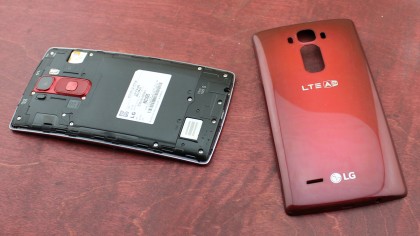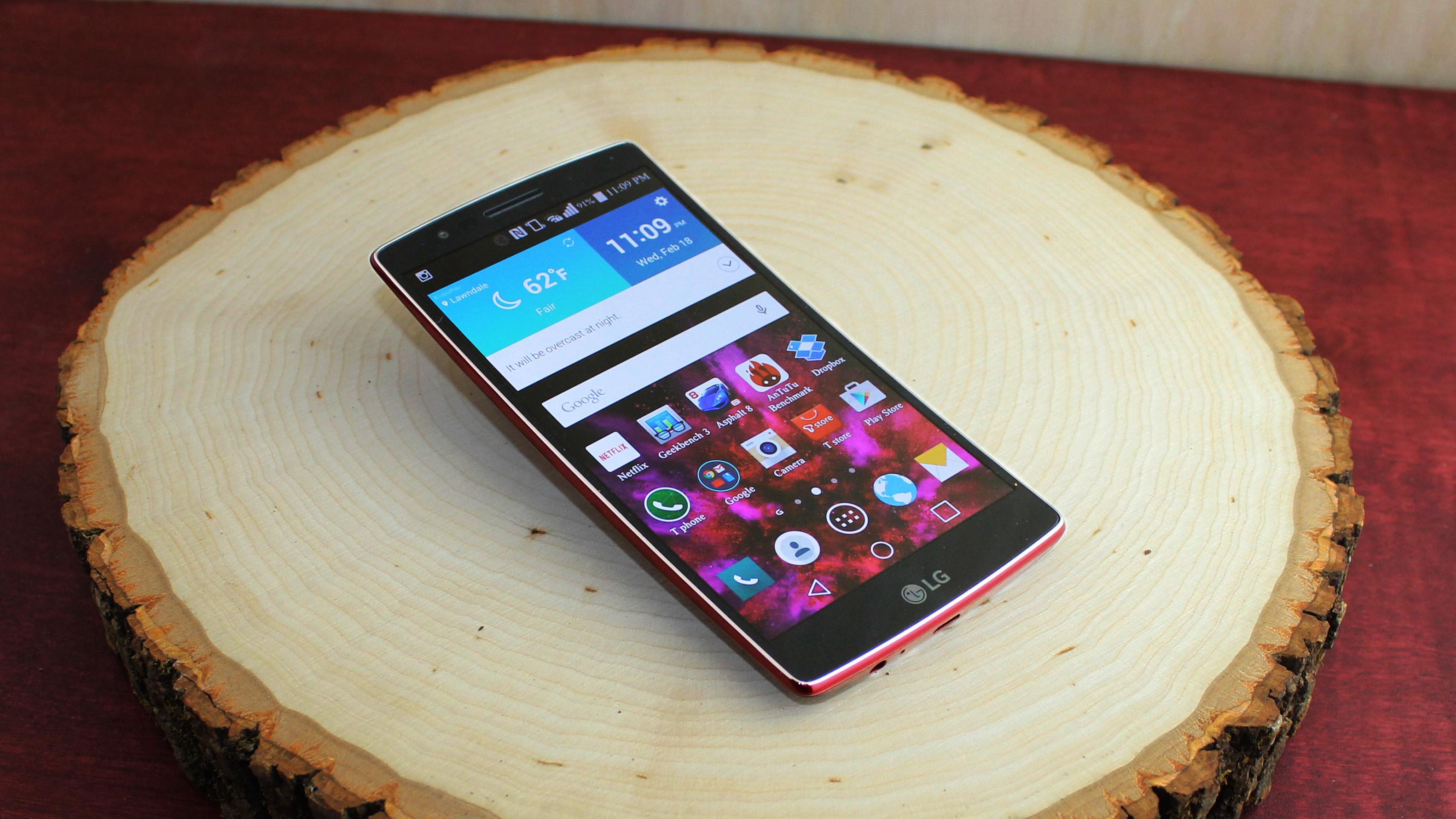Why you can trust TechRadar
At CES 2015, a few days into the new year, LG had joked that the LG G Flex 2 was the fastest device of 2015. All jokes aside, the specs, backed up by benchmarks, make that the partial truth.
LG's curved phone straight-up beat every other smartphone in our speed test initially, thanks to its first-ever use of the speedy Qualcomm Snapdragon 810 processor. It's the chip maker's latest 64-bit, octa-core system-on-a-chip with a clock speed of 2.0GHz.

This blazing-fast CPU, combined with 2GB of RAM and an Adreno 430 graphics chip that's 30% faster than the GPU in the original G Flex, achieved a Geekbench 3 score of 3,506 at first. That would have handily beat the top-performing Samsung Galaxy Note 4's 3,351 score.
Then I ran the test again. The LG G Flex 2 score dropped to a still admirable 3,145. Okay, still in the ballpark. A third test drove the score down to 2,931, a fourth to 2,656, a fifth to 2,224 and a sixth to 2,191. You get the picture. It became nearly as slow as the LG G Flex (2,067).
These topsy-turvy benchmarking scores didn't affect my 3D gaming video watching exploits using the imported phone. Menus would stutter here and there, which is always annoying, but its overall performance was relatively lag-free. Instead, the LG G Flex 2 became hot around the back cover's power button and volume keys. At times, I couldn't turn the display brightness up past a certain percentage because the device needed to cool down. However, this has been a common protection of past LG smartphones too.

Wouldn't you know it, by taking a short break, the score shot right back up to 3,427, which is more in line with how we expect the new Snapdragon 810 processor to perform. This led me to think that the chipset is experiencing overheating issues, but LG suggests that it's likely related to the software and can be fixed post-launch.
"The devices sampled are representative of final industrial design and user experience but are continuing to undergo additional optimizations to enhance benchmark performance," an LG representative told TechRadar in a statement.
"We expect our upcoming software releases to provide further improvements in this area. We remain confident that the G Flex 2 will deliver great experiences to our customers with a tremendous blend of multimedia, performance and industry-leading design."
In the future, once Snapdragon 810 becomes stabilized, it will compete with other top mobile CPUs including Samsung's Exynos chips. It should get even better, too, as 3GB of RAM is included in the souped-up Flex 2 model with 32GB of internal storage. I tested the 2GB RAM model with 16GB of space, which is expandable up to 2TB via a microSD slot behind the back cover.

Call quality
As novel as the LG G Flex 2 is in design and performance, one of the most important features at its core is making calls. Luckily, there are no ups and downs here.
Conference calls went on without a hitch when I used the phone normally, and the microphone was positioned closer to my face. That theoretically gave me a call quality compared to a candybar-style phone, like the iPhone 6. No one reported hearing a difference, of course.
The speakerphone was also adequate, though I still don't appreciate hearing all of my calls via the backward-facing speaker that's within the Flex 2 back cover.
Current page: Specs and performance
Prev Page Introduction, design and display Next Page Interface and apps
